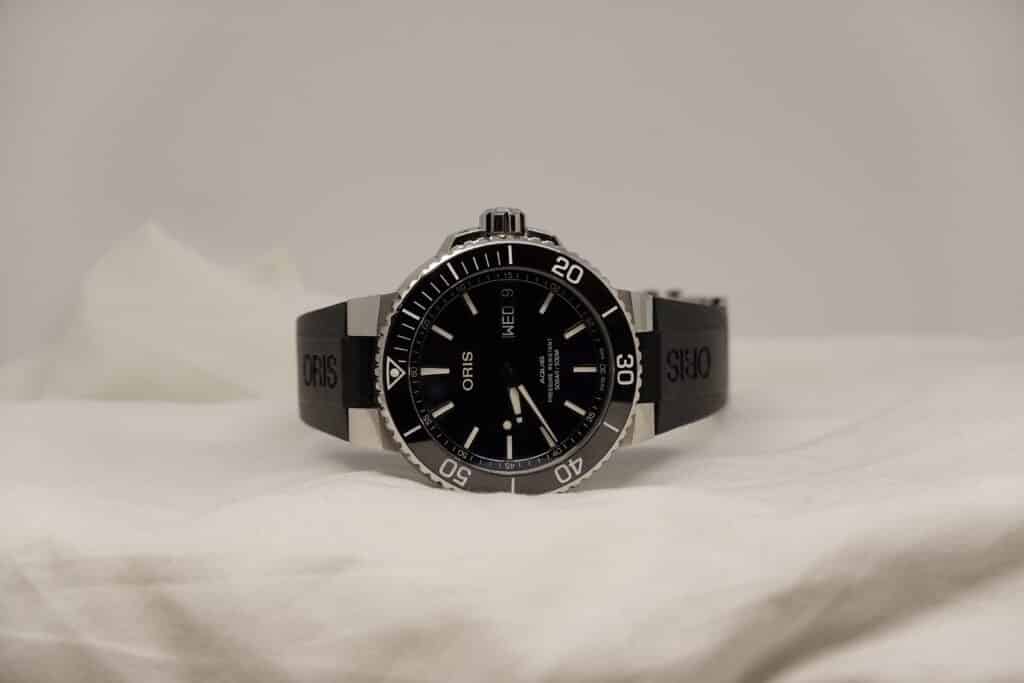Those luxury goods cost more used than new

Buying second-hand an exceptional watch or designer piece of leather goods is now a trend. The craze is such that some of these objects of desire see their ratings reach new heights.
Sold for 416,000 euros! The one considered to be the first Patek Philippe watch, the Nautilus reference 5711/1A-014 (with olive green dial), was sold at auction for 13.7 times its purchase price (30,400 euros) in store. It is not, however, a single model. It is even still available in the catalog of the Swiss brand…
Finally, “available” is a big word. Because to be able to afford such a timepiece from an authorized Patek Philippe retailer, it takes ten years of waiting… and having already acquired other pieces from the house. Clearly, the annual production of the watch manufacturer being limited, distributors have plenty of time to choose their customers. “Even a EuroMillions winner who landed in the store and was willing to pay double the price would have this iron law imposed on them,” admits a retailer half-heartedly.
The principle: he will first have to buy less sought-after pieces from the Geneva company – and often more expensive by the way – than this legendary watch before he can afford it. Just to prove that he is a true watchmaking enthusiast and Patek lover… and not just a wealthy collector who has sniffed out the opportunity to make a nice capital gain. Indeed, for several years, the brand has been affected by a real phenomenon of horological speculation.
Its “historic” model, however, is not the only one to see its value climb over the years. In 2016, a Nautilus from the same range, but with a blue dial, cost 25,000 euros. An already high price for a model after all quite “banal”. And yet, it resells today no less than 100,000 euros. “I finally made good investments by buying, about ten years ago, a Patek Nautilus, then an all-steel Rolex Cosmograph Daytona and an Audemars Piguet Royal Oak…”, rejoices Alexandre, a business manager watch lover. At the time, he had paid 55,000 euros to afford these three luxury timepieces. Today, his “Swiss heritage” is estimated at more than 250,000 euros!
If the enthusiasm of buyers for high-end watches dates back ten years, the phenomenon has accelerated with the pandemic. “People perceive our brand as a safe haven in times of crisis”, we recognize at Rolex, which is also the object of all desires. But who does not see this runaway with a very good eye. “We make and sell watches so that they are worn, and not so that the untrained can buy them only with the aim of reselling them for 3,500 euros more expensive on the Chrono24 site as soon as they leave the store”, comments, dissatisfied, a representative of the watchmaker.
Indeed, Rolex is a victim of its success in the face of the growing demand from lovers of beautiful watches. Faced with a shortage of qualified personnel, the Geneva-based company is struggling to increase its production, which is still close to one million units per year. Its products therefore maintain an image of rarity and exclusivity. As a result, the strong demand leads to an increase in second-hand prices…
However, the trend remains limited to a few highly sought-after brands, such as Audemars Piguet, Rolex or Patek Philippe. Richard Mille watches, for example, may be the most expensive in the world, but second-hand, they lose 30% of their value. Logic: the person able to spend 150,000 euros in a watch prefers to buy it new rather than second-hand for 100,000 euros. Strangely, some more accessible brands can see prices stay very high. This is the case of the new Black Bay Chrono signed Tudor (a subsidiary of Rolex), or the Tissot PRX Powermatic 80, whose second-hand price is often identical to that of new (650 euros).
Another luxury item whose second-hand value exceeds that of new: the Hermès handbag. But not just any: the Kelly, so nicknamed because Grace Kelly had adopted it, and the Birkin, imagined by the British star after a meeting with the CEO of the prestigious house during a Paris-London flight . Unlike watches, Hermès is the only label to increase in value. “What determines the price of a bag is above all its condition and its rarity… It is not because it is a Hermès that it will be worth more. If it is worn or damaged, it can quickly discount.
At Chanel or Vuitton, with the exception of capsule collections or limited series, there are few models whose prices take off,” says Antoine Saulnier. Auctioneer specializing in vintage, fashion and leather goods within the sales company Gros&Delettrez, he sold a Birkin Himalaya from 2016 at 124,800 euros, almost three times the price displayed in the shop (47,000 euros). The reason for such a sum? “Its color and its interest since it was worn by Kim Kardashian and Lady Gaga, he justifies. The value of a bag includes some uncertainty. If the model is withdrawn from the catalog or in a rare color, its rating can soar… You still have to know it and anticipate it. It’s a bit like the real estate market!”
Common colors are not necessarily of interest at auction. A black model in perfect condition will retain its value, but will not become a priceless piece. However, it is still a good investment considering inflation. In ten years, the retail price of a Kelly bag or a Birkin has increased by 50%. It would have sufficed to keep it in its box to resell it at the current price. Chanel’s Timeless in black quilted lambskin follows the same trajectory. In fifteen years, its retail price has tripled. Its market value therefore followed. Thus, a bag purchased for 2,500 euros in 2010 can easily find a buyer at around 3,500 euros today. It’s more profitable than a savings account account!



Responses